Illinois can get very cold during the winter, especially in the northern part of the Prairie State. Warm chicken breeds that can’t adapt to cold climates can die when the temperatures drop too much, so it’s best to find winter-hardy chicken breeds for your coop.
To save you the trouble, we’ve compiled a list of the best egg laying chickens for Illinois — breeds that will survive the cold winter days with no trouble and keep thriving throughout the year.

Table of Contents
Illinois Weather and Temperatures
The average temperature in Illinois ranges between 48°F and 58°F, which isn’t too harsh for chickens, as they can easily stay warm at these temperatures.
However, during the winter, temperatures can drop as low as 0°F.
Winter temperatures normally range between 0°F and 30°F. Southern Illinois is noticeably warmer thNorthernern Illinois during the winter.
While spring and fall see moderate temperatures, the summers can be very hot in Illinois.
The average summer temperature is around 80°F, which is just fine for chickens and doesn’t put them in any danger. However, northern Illinois sees about ten days at or above 90°F, while those temperatures can stick around for forty days in the southern part of the state.
90°F is dangerous for birds: They can overheat and die, so you’ll need to provide enough water and shade during the summer.
Once temperatures drop to 32°F or lower, you’ll need to insulate the coop and install a heater to keep your chickens from struggling or experiencing frostbitten combs.
Best Egg Laying Chickens for Illinois
1. Welsummer Chickens
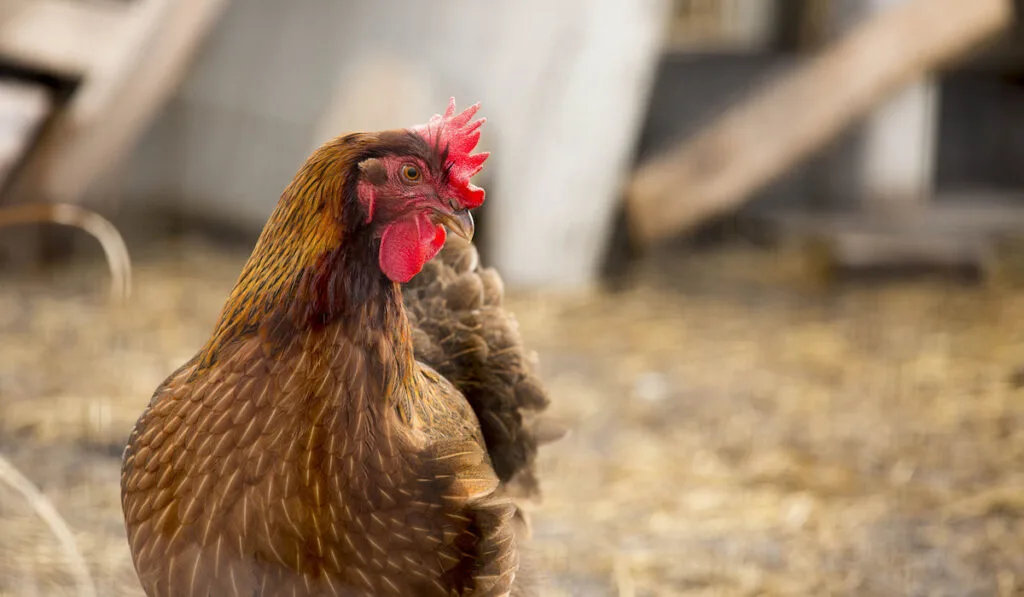
Welsummer chickens can live a very healthy life in cold climates.
If you live in northern Illinois, where you might see up to 140 days of freezing-cold temperatures, Welsummer chickens are ideal for your home.
They’re a Dutch breed of chicken, laying up to 250 eggs per year, and they’re also great as dinner birds. Although they’ll stay confined during the winter, they prefer exploring and foraging when it’s warm enough outside.
A healthy Welsummer chicken can live up to 9 years, and they do very well in flocks. These docile birds get along with other birds just fine, and they’re not afraid of interacting with humans either.
Since they’re not very good at flying, you don’t need to have a tall fence to keep them from flying away, and they’re generally low-maintenance!
Just keep in mind that they can be super loud at times, something that your neighbors might not appreciate.
2. Cochin Chickens
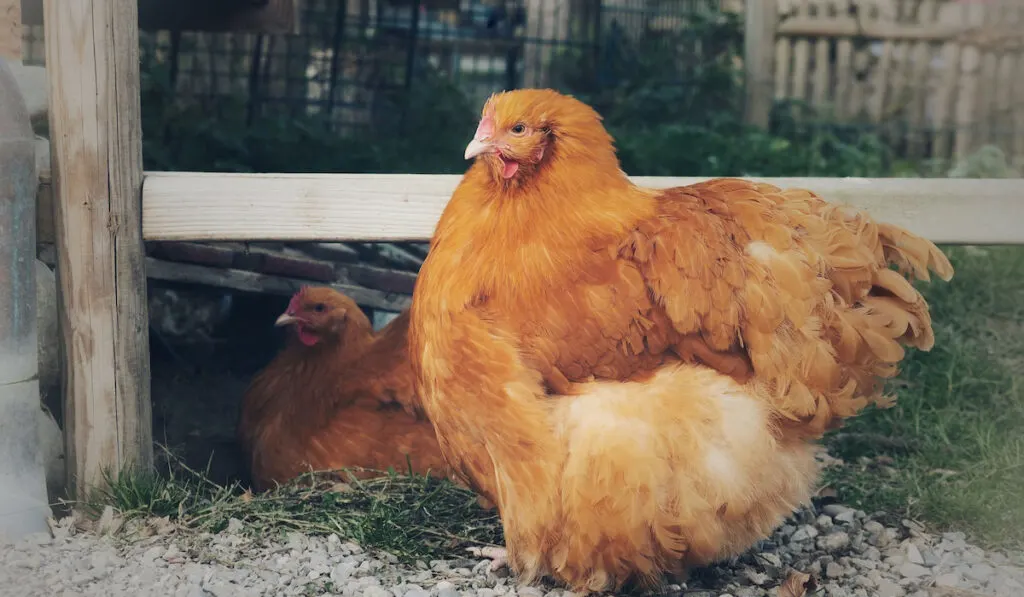
Cochins are large, beautiful birds, usually weighing between 8 and 11 pounds.
Despite being great egg producers, laying between 150 and 180 eggs a year, Cochins are mostly kept for their aesthetic appeal.
Similar to Welsummers, they don’t fly, and their coop needs to be low on the ground (or it needs a climbing rail).
While cochins are most definitely resistant to cold weather, they can develop frostbite on their toes. If their pen gets muddy during the winter, the mud on their feathered toes will freeze, causing severe frostbite.
Cochins get on well with other birds, and you don’t have to worry about a fight breaking out. They’re also healthy birds with no outstanding health issues, so you can expect them to live up to 10 years.
Because of their thick plumage, they easily stay warm during the winter, and they won’t ease up on egg production during the colder months of the year!
3. Plymouth Rocks
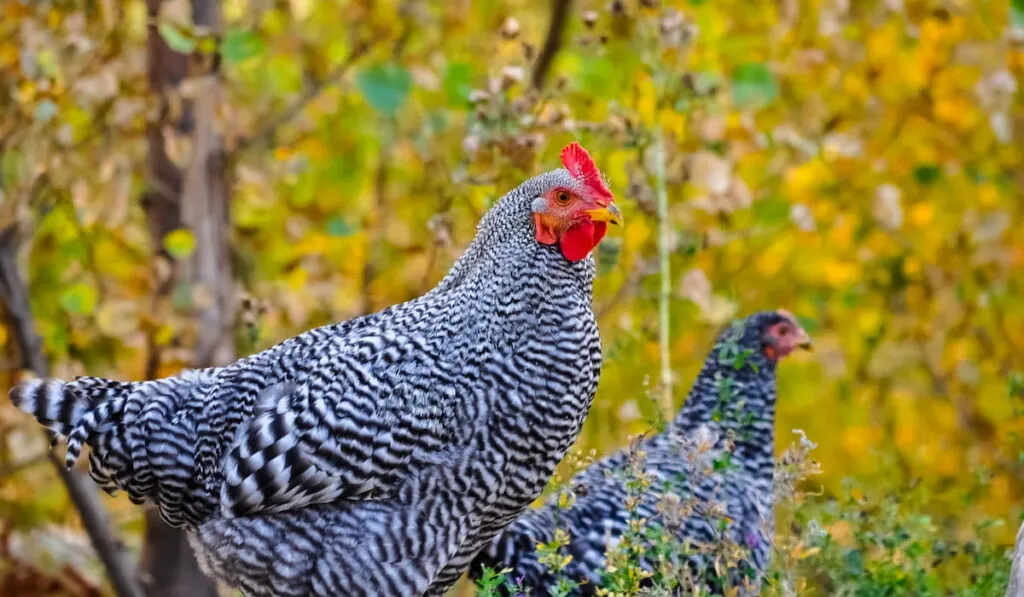
As another large chicken breed, Plymouth Rocks can weigh up to 10 pounds.
These chickens are easy to care for, and they’re a great bird to have in any flock because of their easygoing temperament.
These birds are cold-hardy and they won’t have a problem surviving the winter as long as they have a proper shelter. Outside of winter, however, they don’t like being stuck in confined spaces, so it’s best to let them forage around the yard.
Plymouth Rocks can have a little bit of trouble in the summer, though, so it’s important to ensure they have good ventilation and enough water.
They were once the most common chicken breed in the USA, not only because of their meat but also because of their egg production. In a year, a Plymouth Rock hen can produce about 200 eggs!
On top of all that, they’re also some of the longest-living chicken breeds, often living for more than ten years.
4. Swedish Flower Hens
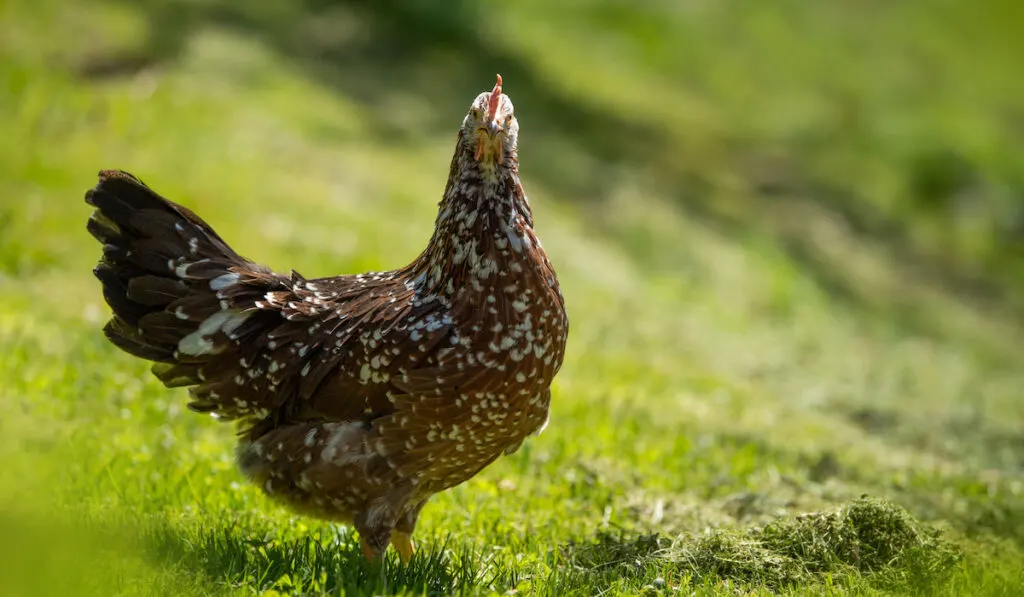
Laying between 150 and 200 eggs a year, the Swedish flower hen is a great choice for an egg laying chicken in Illinois. As you can imagine, they’re well-adapted to colder climates because they come from Sweden – a country much colder than Illinois.
Swedish flower hens could be a bit difficult to find, though, as they almost went extinct a few decades ago and are still considered endangered.
Despite being large and weighing up to 8 pounds (although hens rarely weigh that much), they’re not socially imposing birds, and they get along well with other chickens.
When the temperatures rise, they’ll enjoy foraging the yard, but they don’t have a problem with being closed in a coop during the winter. They’re also generally healthy birds that don’t have any outstanding health issues.
5. Easter Eggers
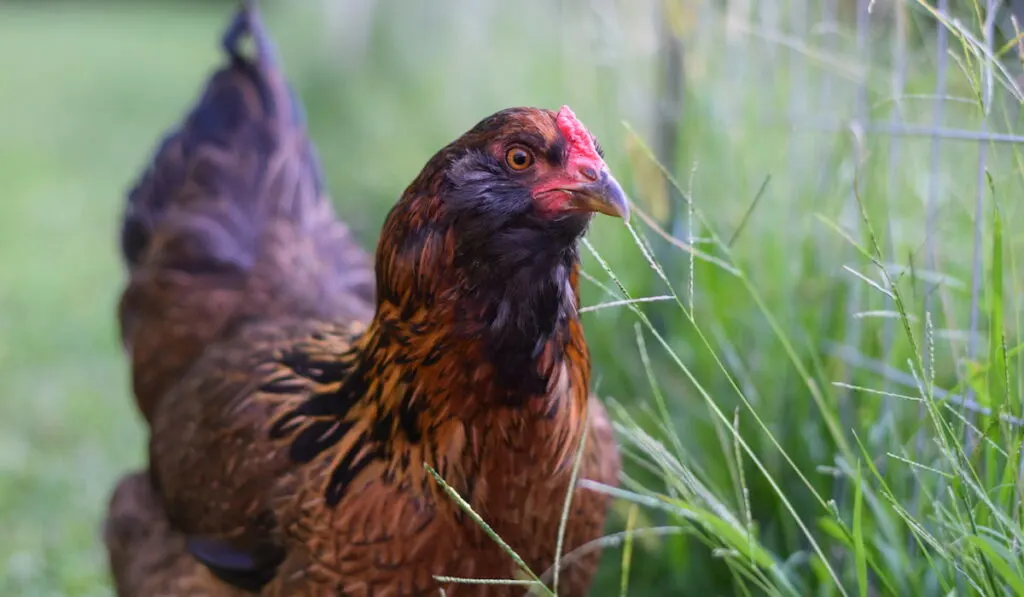
Unlike most other breeds on this list, Easter Eggers are light birds, with hens weighing no more than 4 pounds and roosters weighing no more than 5.
Despite this, they do well in the winter, and you won’t have to worry about them freezing.
They’re mostly raised for their eggs, as Easter Eggers lay between 200 and 280 eggs a year! Some people also raise them for their meat, but since they’re so light, you can’t get a lot of meat from them.
Easter Eggers are calm and friendly birds that won’t cause trouble in the flock, but they’re prone to suffering bullying by other birds because of their small size.
Being bullied shouldn’t be a problem if you keep them in a flock with other breeds from this list, as they’re all fairly docile.
There are no noticeable health issues with these birds, and they’re easy to care for, which makes them a great starting option!
7. Hamburg Chickens
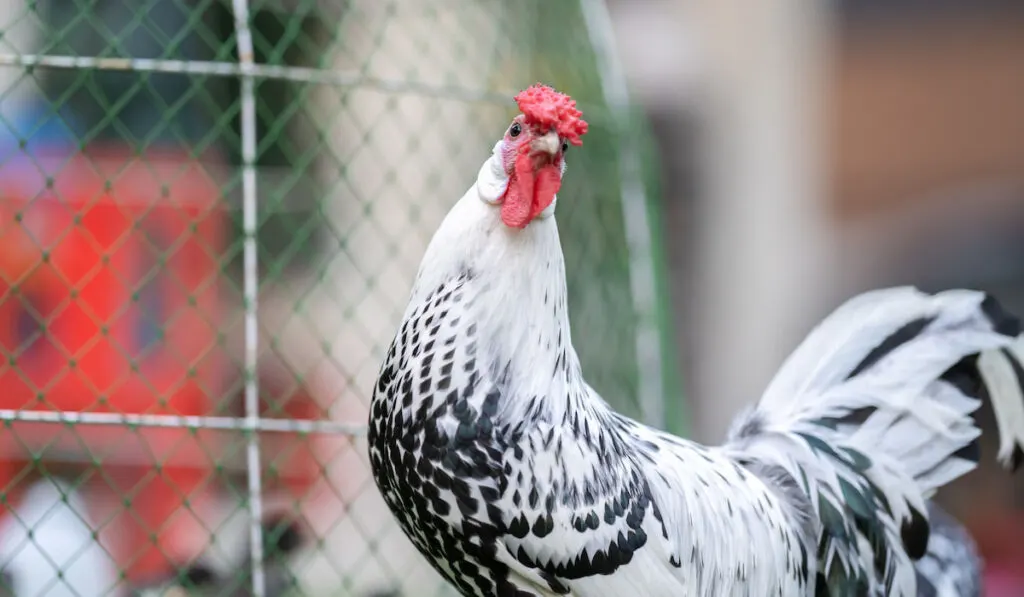
Finally, we have Hamburg chickens. They’re a small breed, rarely weighing more than 5 pounds, and they lay small eggs.
However, they make up for the small size of the eggs by laying plenty of them — up to 250 eggs a year!
Hamburgs can withstand cold temperatures. They need extra care if temperatures drop below 32°F, so it’s best to have water warmers and a heater prepared.
During the warmer seasons, they like to forage around the yard, so you won’t have to spend as much money on food as you would with some other breeds.
It’s important to point out that Hamburgs are noisy chickens, so they may not be the best option if you have nearby neighbors.
In Conclusion
Welsummers, Plymouth Rocks, and Swedish Flower hens are just some of the breeds that will adapt well to the weather in Illinois. Most of these breeds lay eggs throughout the entire year, so you won’t have to worry about your egg supply during the winter.
While they don’t need much maintenance if it’s reasonably cold, it’s important to remember that freezing temperatures are still dangerous for chickens, and you’ll need to keep the coop warm to ensure their survival.
